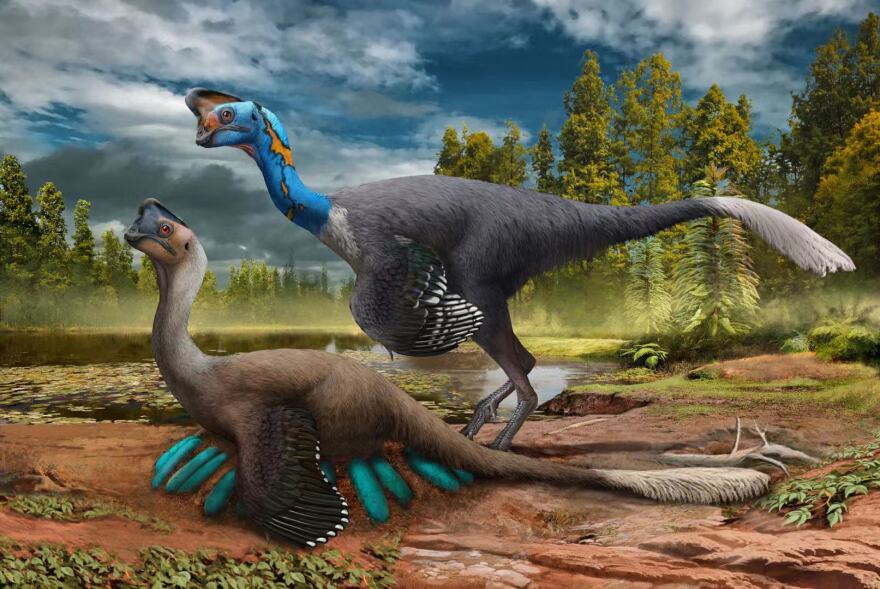Many people know that birds descend from dinosaurs.
But a unique new fossil discovery that involved researchers from the Carnegie Museum of Natural History shows that some dinosaurs had a lot more in common with birds than many of us realize.

The fossil, of an oviraptorosaur, was found in southern China – a 70-million-year-old testament to how that dinosaur nurtured its young. Researchers said it’s the first-ever fossil of a dinosaur tending a nest of its own eggs complete with baby dinosaurs inside.
Though they were not birds, the flightless oviraptorosaurs were rather birdlike: completely covered in feathers, and with short skulls with toothless beaks. Members of the oviraptorosaur family – which includes the Carnegie’s own famous “chicken from hell,” Anzu wyliei -- had long front limbs and walked on their hind legs. But the new find reveals more about how they lived.
“This is the first time that combination has been found of an adult dinosaur sitting atop a nest of its eggs that are known to contain unhatched babies inside,” said Matt Lamanna, the museum’s curator of vertebrate paleontology.
Lamanna helped with the lab work on the Cretaceous-era fossil, and contributed to the scientific paper announcing its discovery recently in the journal “Science Bulletin.” The paper’s lead authors were Beijing-based paleontologist Xing Xu, and Shundong Bi, a professor at Indiana University of Pennsylvania and a Carnegie Museum research associate.
The oviraptorosaur’s fossil was a partial skeleton, including the pelvis that topped the two dozen large eggs, plus leg bones and vertebrae. It was smaller than Anzu wyliei – perhaps six feet long and weighing between 100 pounds and 200 pounds, said Lamanna.
Scientists could not tell its exact species because the skull was missing, he said. However, they could discern a fair amount about the contents of the 6-inch-long eggs (as well as about the eggshells, which research into oviraptoroids indicates were originally bluish-green, Lamanna said.)
Researchers said that at least seven of the eggs preserved bones or partial skeletons of unhatched embryos. Lamanna described them as “little carbon copies of the adult bones, basically.” The fact that some embryos were close to hatching suggests that the adult died while it was incubating its nest just as a modern bird would, rather than simply guarding its nest like a crocodile, as some have hypothesized.
“This dinosaur was a caring parent that ultimately gave its life while nurturing its young,” he said.
Further analyses indicated that the eggs were incubated at high, “bird-like” temperatures.
In addition, the adult oviraptorosaur preserved in its abdominal region a cluster of pebbles – almost certainly gastroliths, or “stomach stones,” deliberately swallowed to aid in digesting food. “This is the first time that undoubted gastroliths have been found in an oviraptorid, and as such, these stones may provide new insights into the diets of these animals,” read a statement from the museum.
The fossil was unearthed several years ago in Ganzhou City, said Lamanna. He said it will remain in China.





